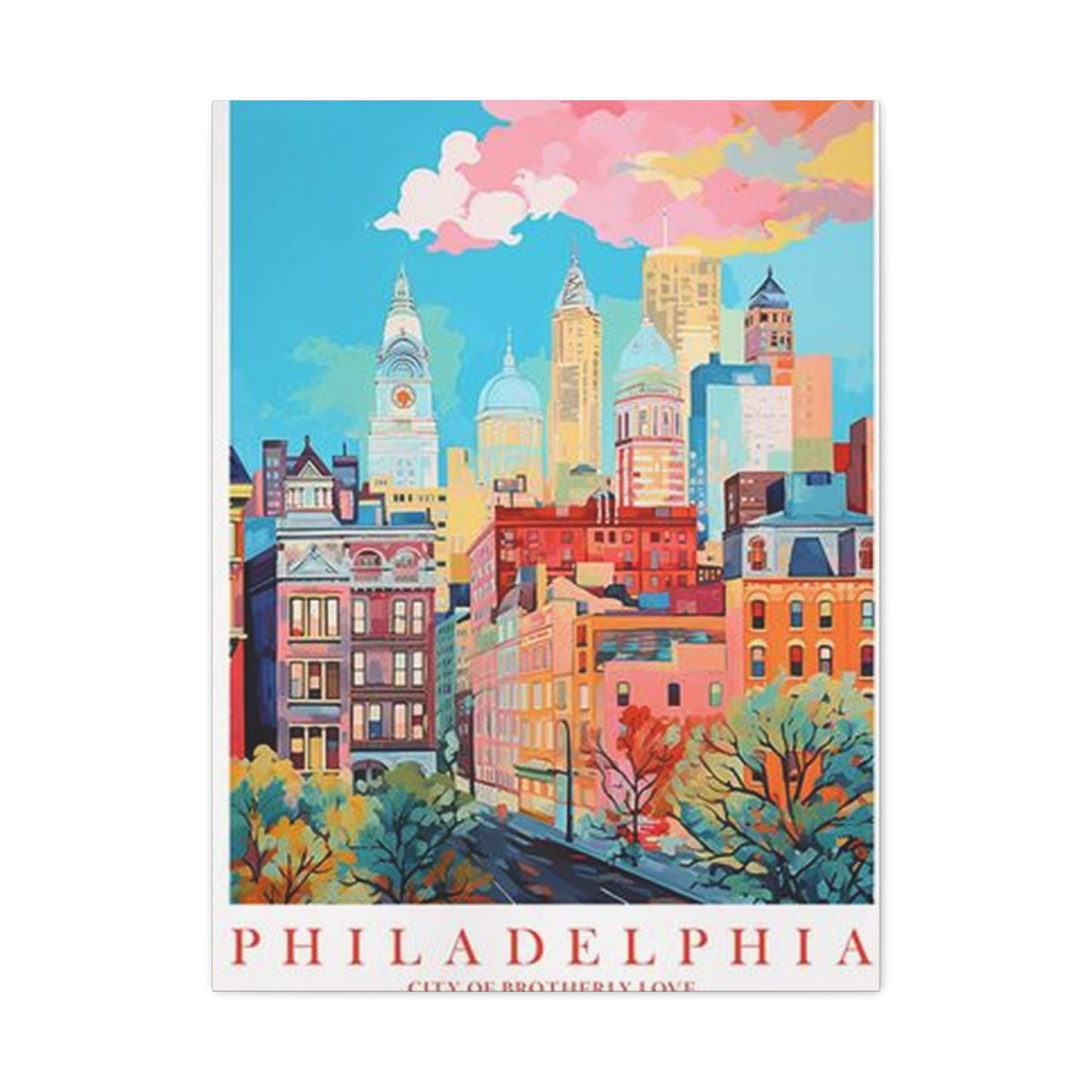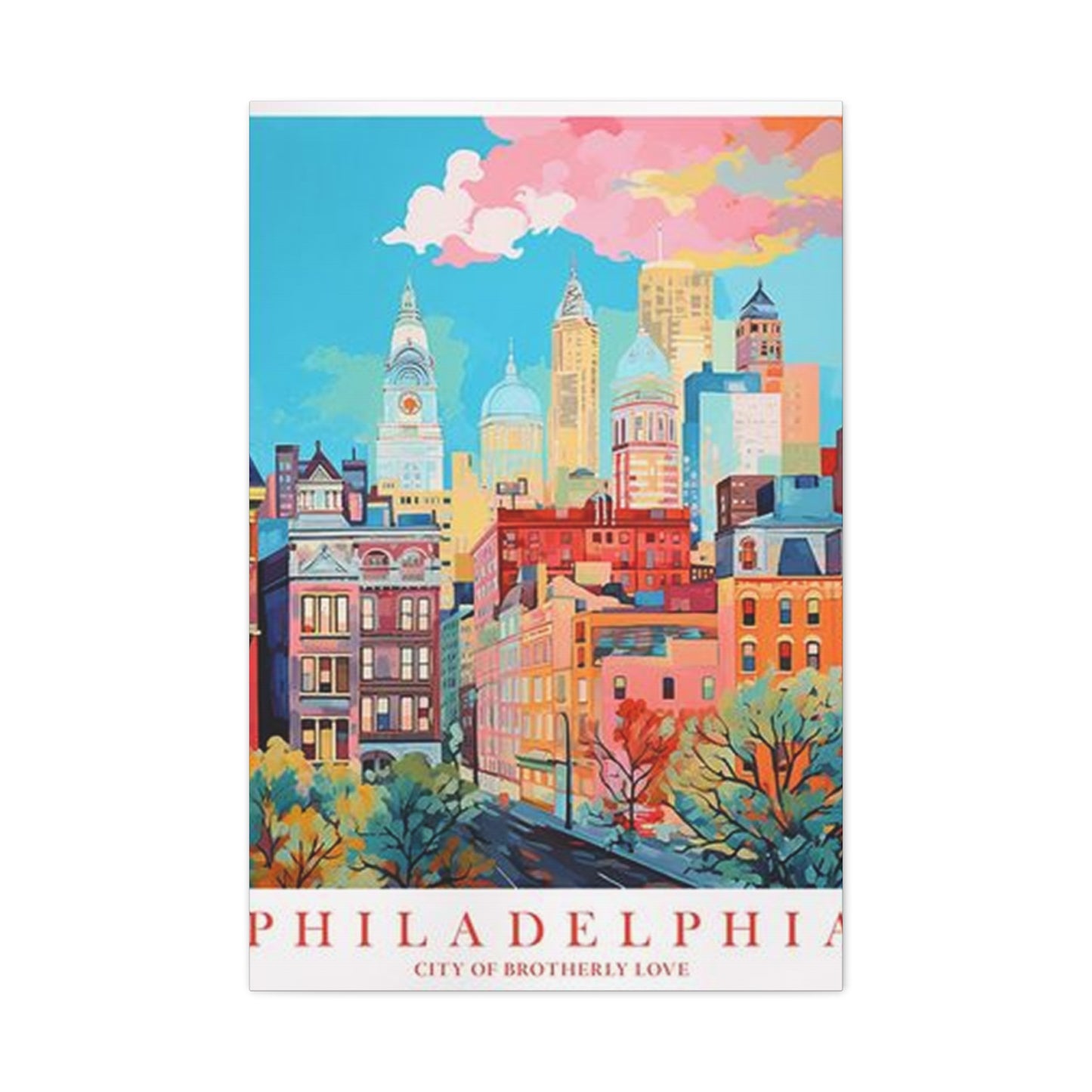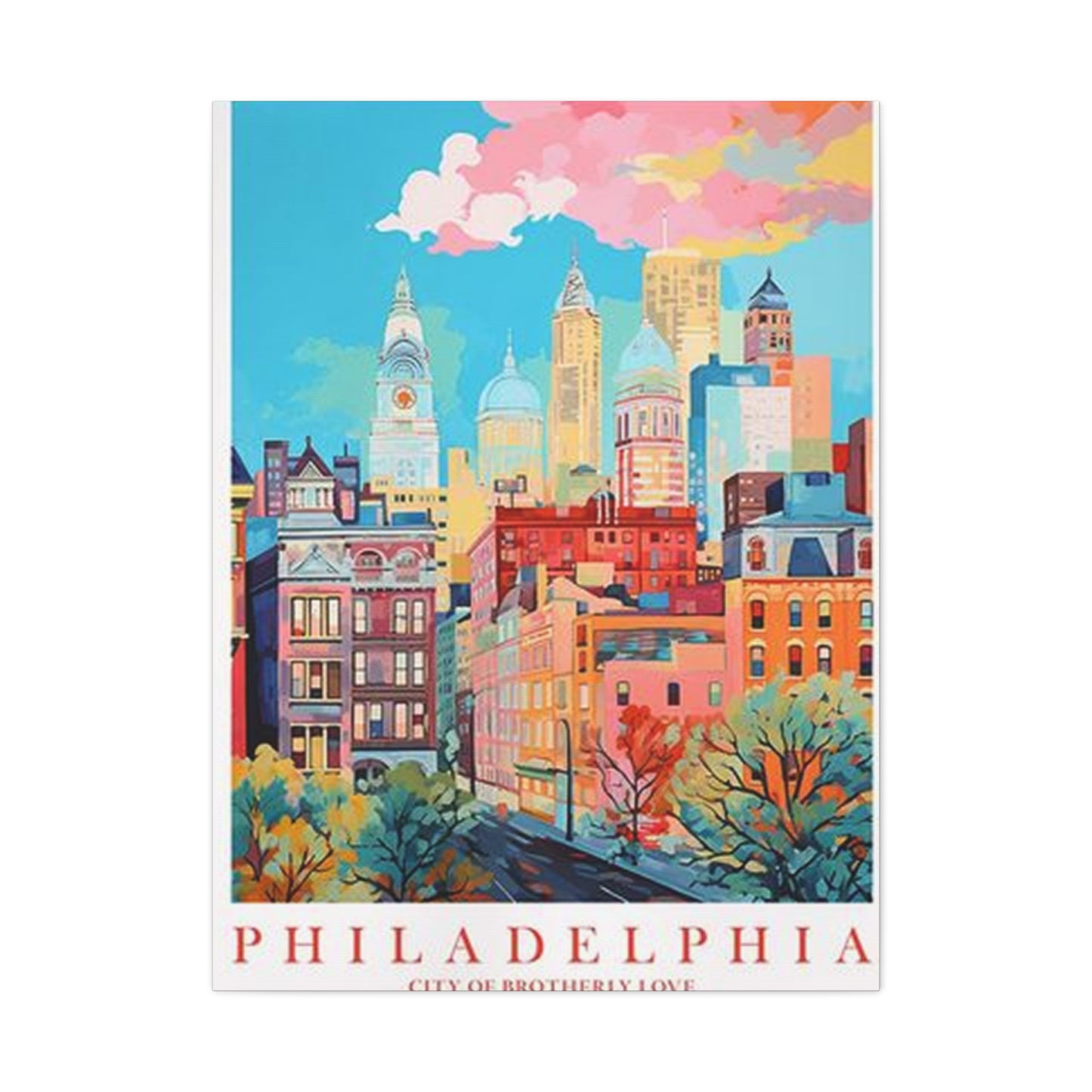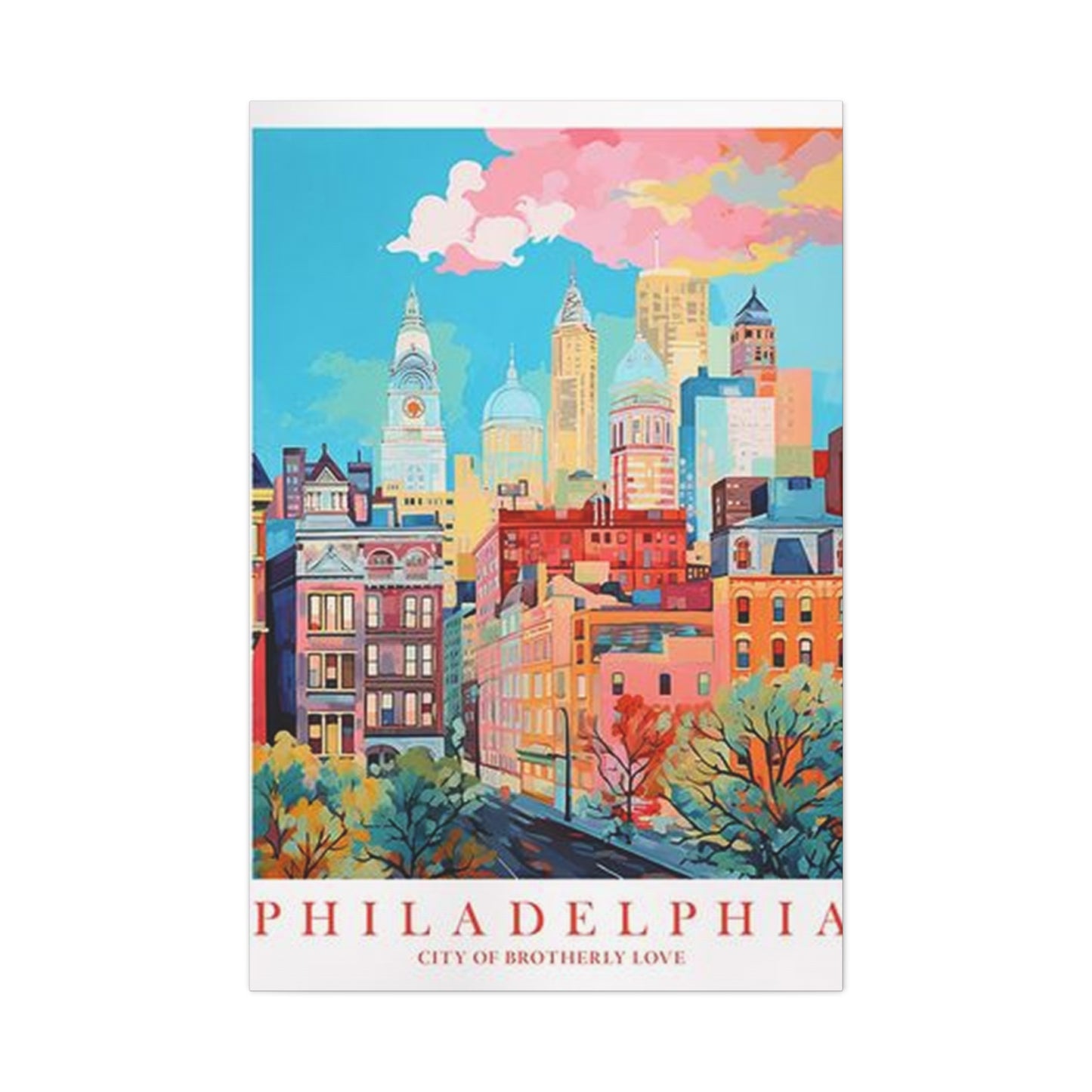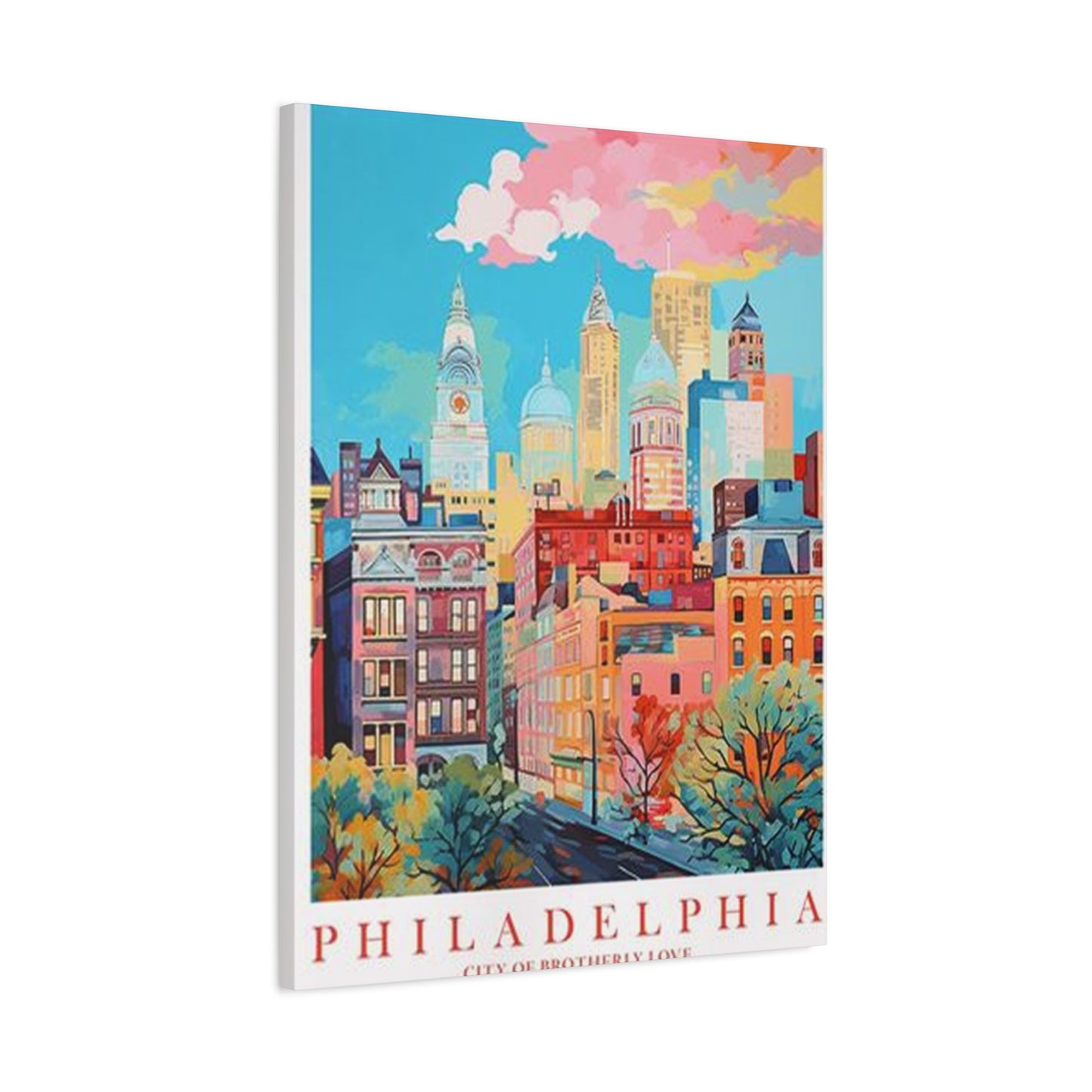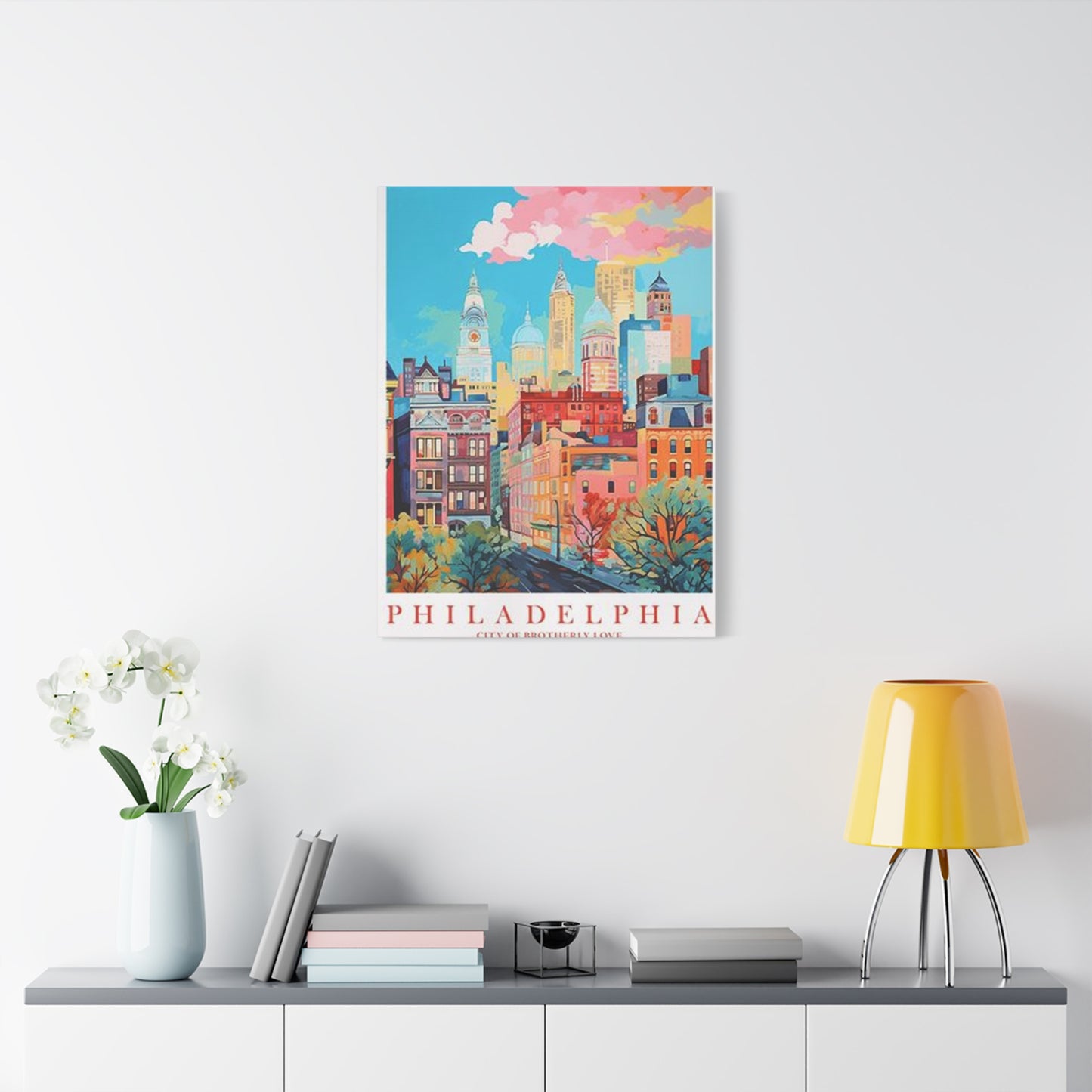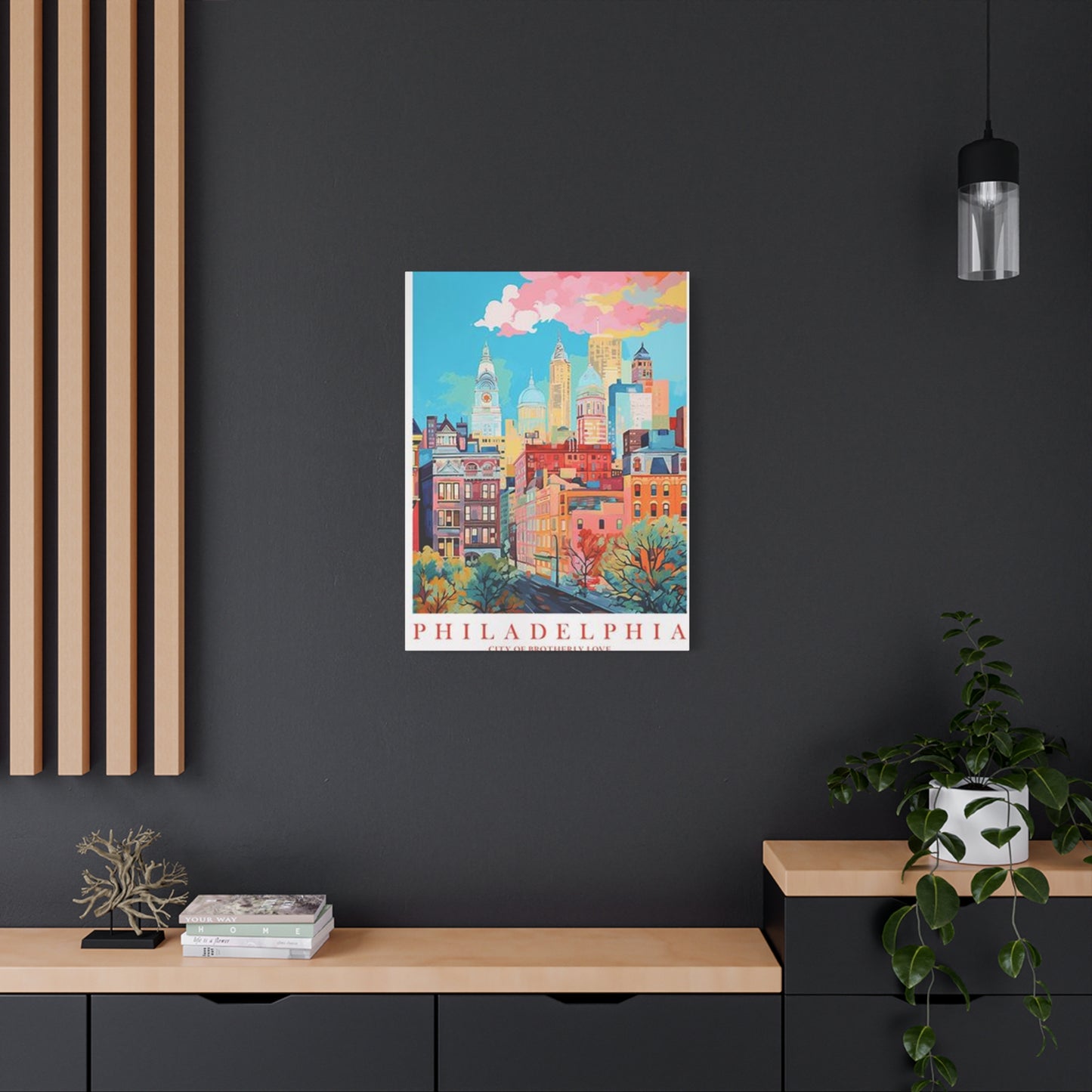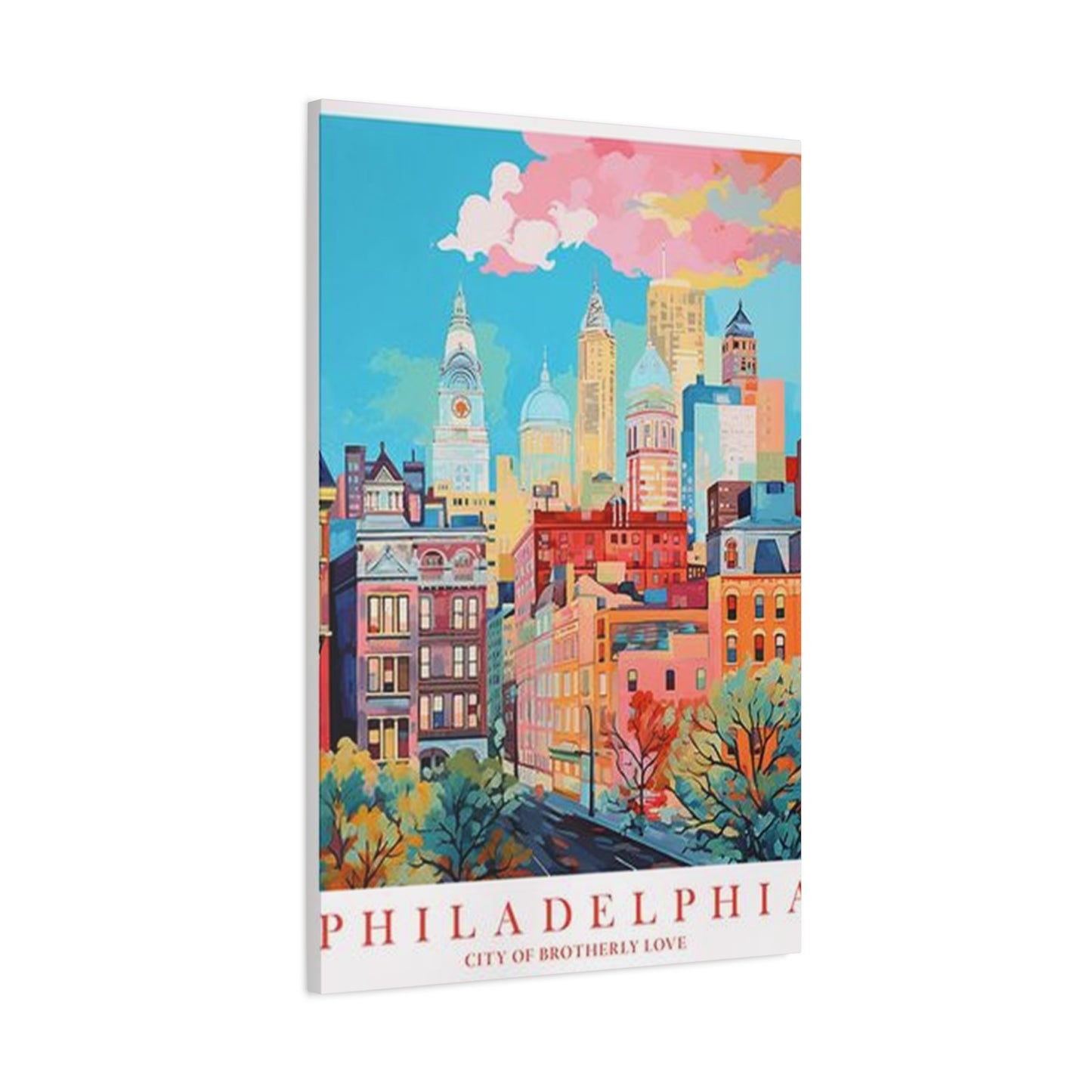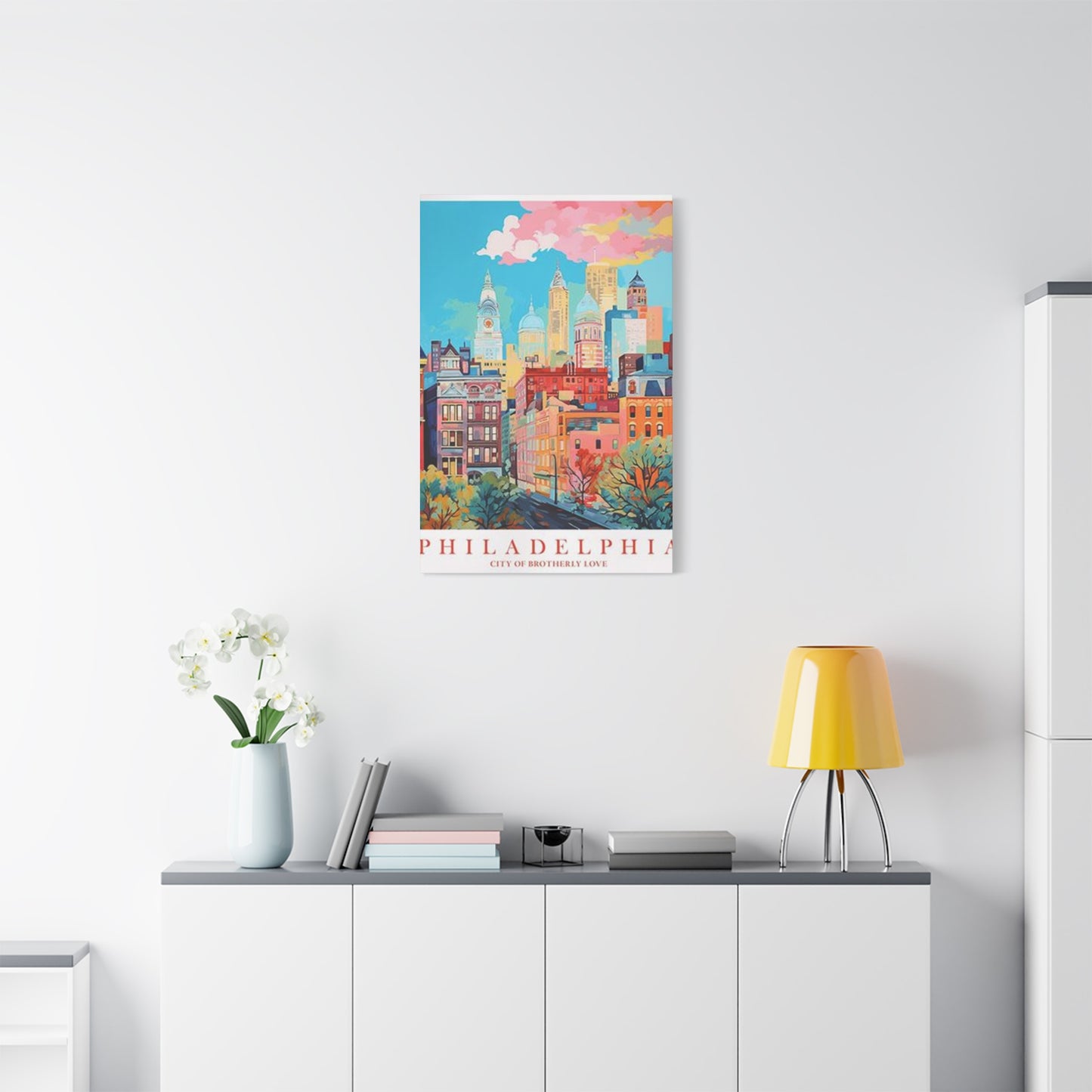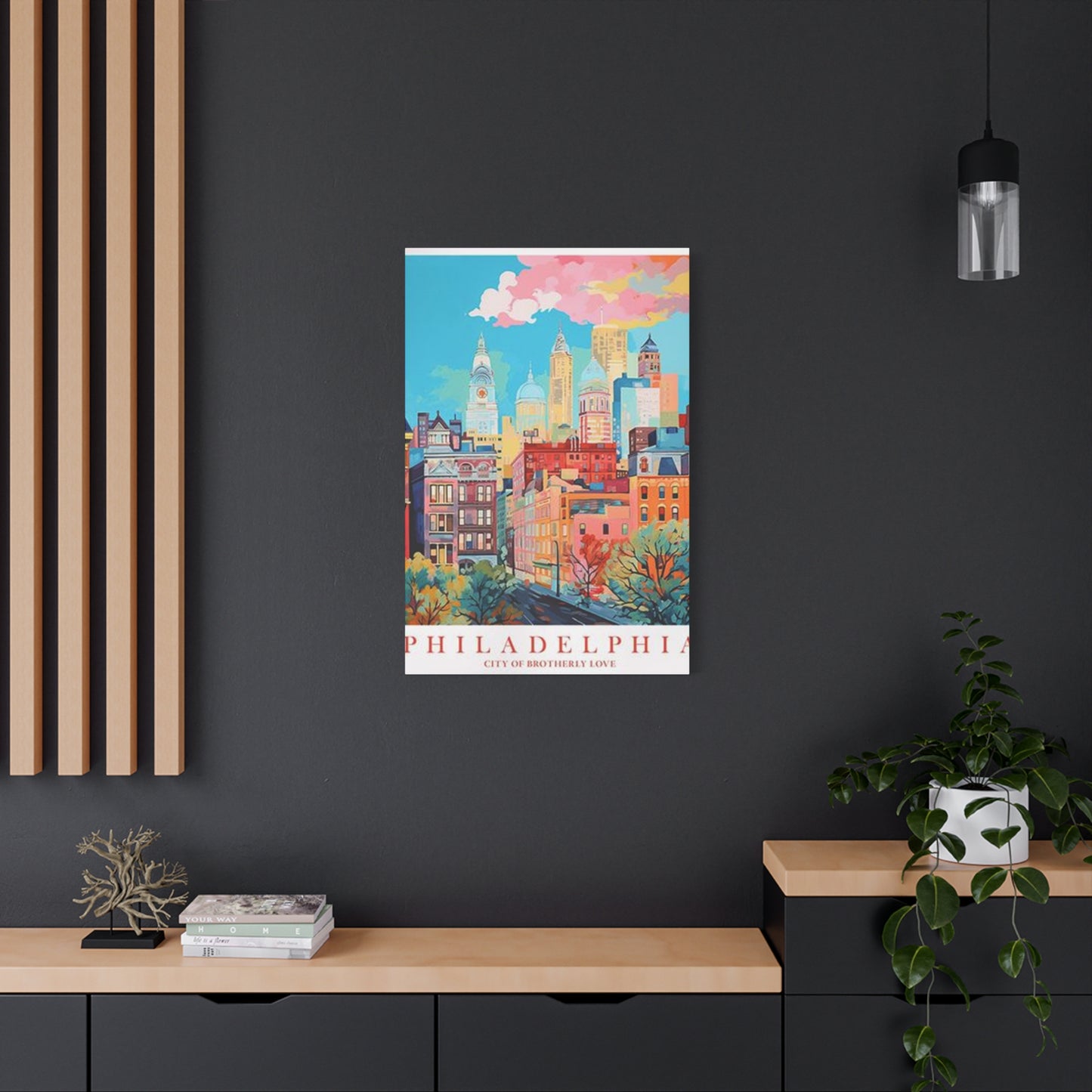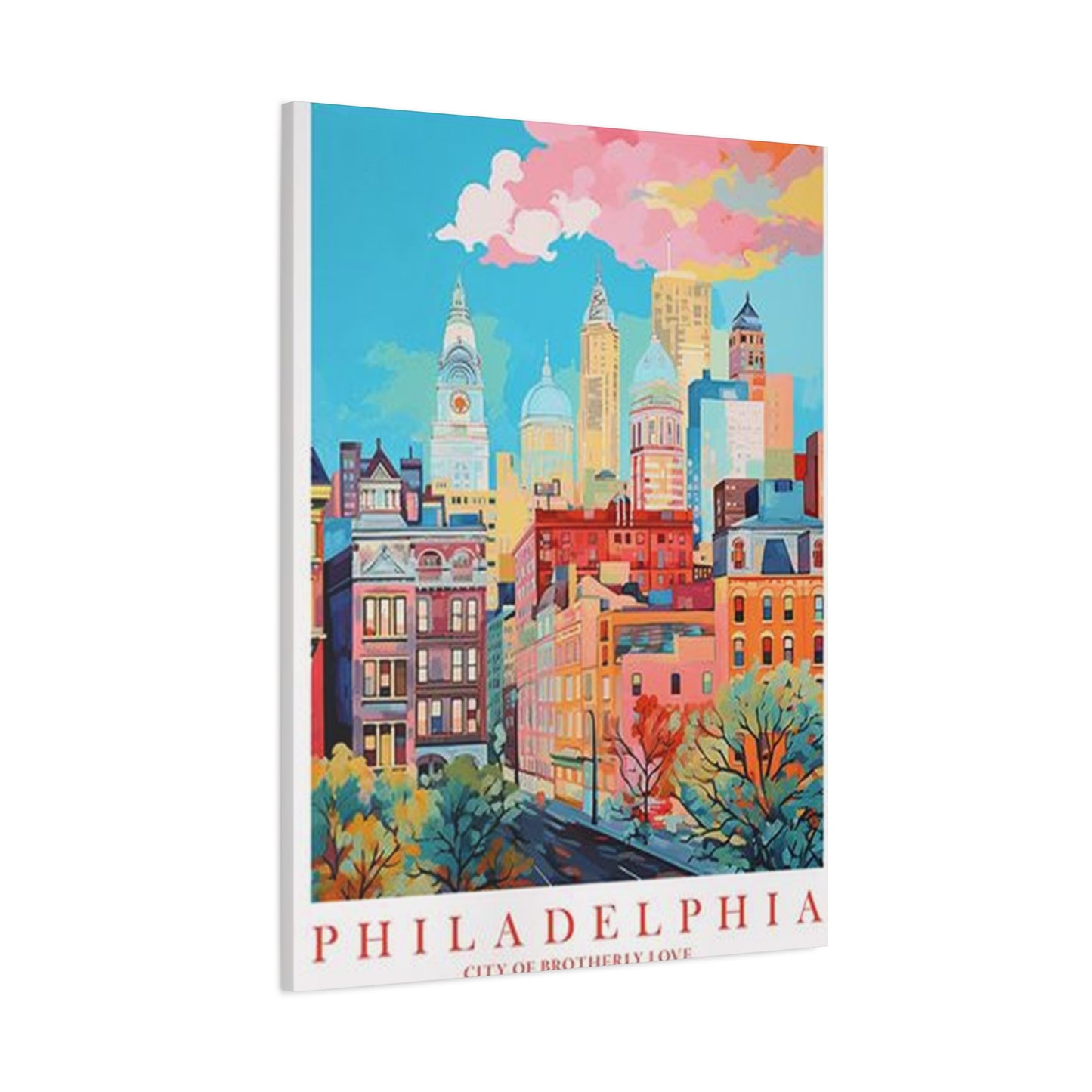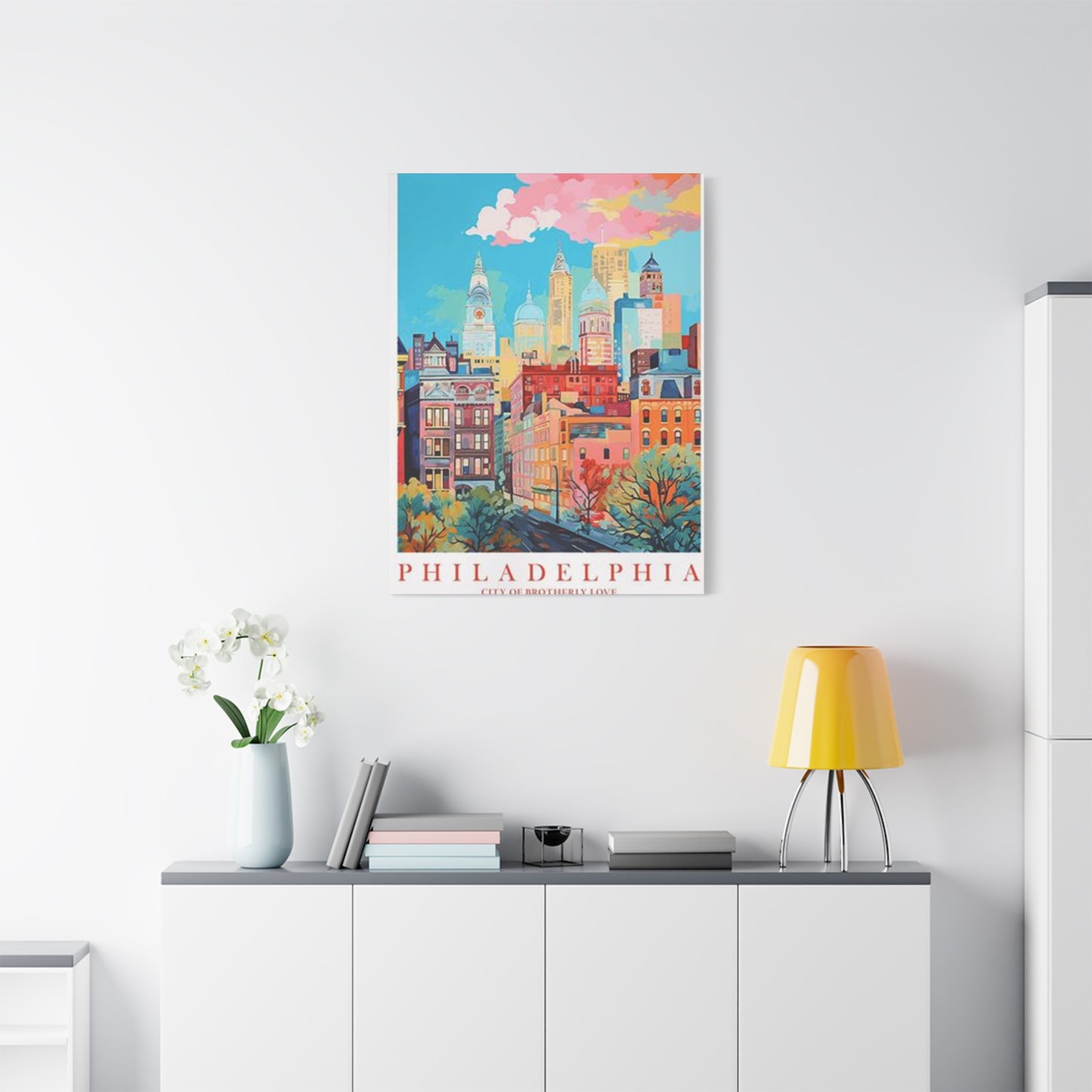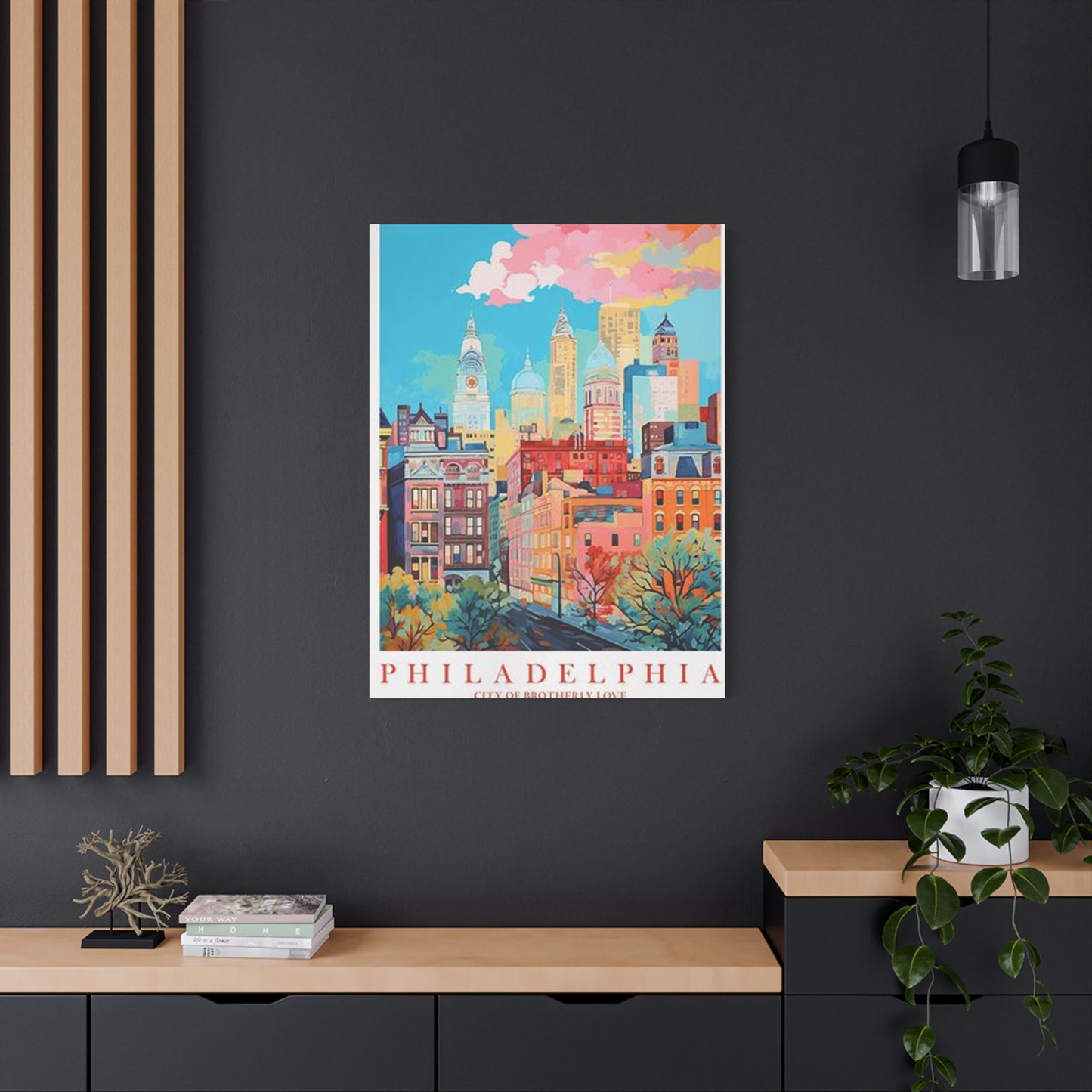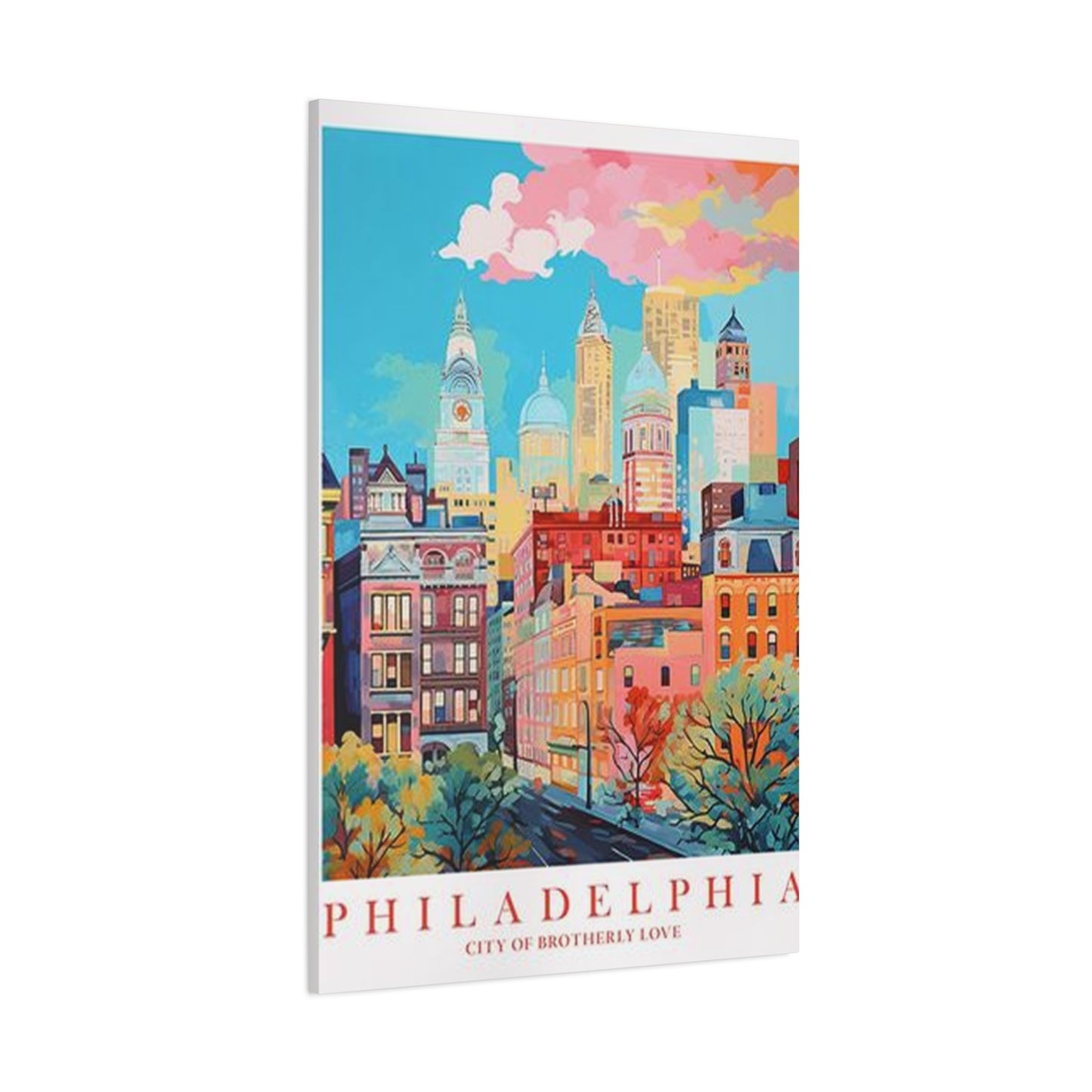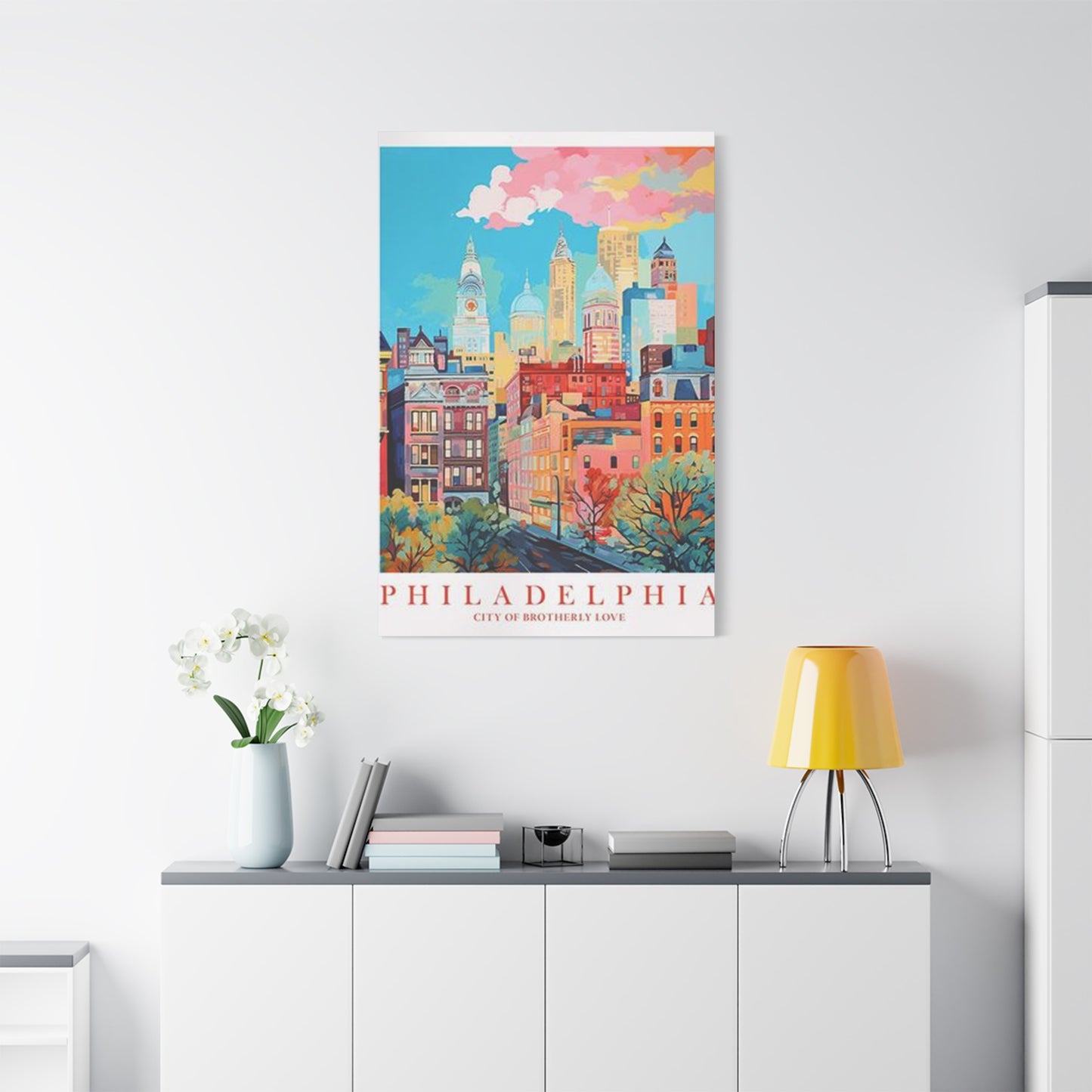Philadelphia Wall Art: Exploring the City of Brotherly Love's Vibrant Visual Heritage
Philadelphia stands as one of America's most culturally rich cities, where history meets contemporary creativity in extraordinary ways. The city's walls serve as canvases that tell stories of revolution, community, and artistic expression. From the colonial brick buildings in Old City to the modern developments in Northern Liberties, Philadelphia's wall art scene represents a living museum that captures the essence of American urban culture.
The tradition of adorning walls with meaningful imagery dates back centuries in Philadelphia, evolving from simple signage and advertisements to sophisticated murals that rival gallery exhibitions. Today's Philadelphia wall art encompasses everything from massive public murals funded by community organizations to intimate street art tucked away in hidden alleys. This visual landscape reflects the city's diverse population, rich history, and forward-thinking artistic community.
Philadelphia's commitment to public art distinguishes it from other major American cities. The municipal government actively supports wall art initiatives, recognizing their power to transform neighborhoods, preserve cultural heritage, and provide platforms for emerging artists. This support has created an environment where creativity flourishes on building facades throughout the metropolitan area.
The economic impact of Philadelphia's wall art scene cannot be understated. These visual displays attract tourists, support local businesses, and contribute to property value increases in previously overlooked neighborhoods. Art districts have emerged around particularly concentrated areas of wall art, creating economic opportunities for artists, gallery owners, and service businesses.
Historical Foundation of Philadelphia's Mural Movement
Philadelphia's mural tradition began in the 1960s when community activists recognized the power of public art to address social issues and bring neighborhoods together. The earliest examples focused on civil rights themes, neighborhood pride, and cultural celebration. These pioneering works established precedents that continue to influence contemporary wall art throughout the city.
The Philadelphia Anti-Graffiti Network, established in 1984, played a crucial role in channeling creative energy toward constructive artistic expression. Rather than simply removing unauthorized artwork, this organization provided opportunities for young artists to create legitimate wall art with community support and proper permissions. This approach transformed potential vandalism into neighborhood assets.
During the 1980s and 1990s, Philadelphia's wall art scene expanded rapidly as more communities embraced public murals as tools for storytelling and neighborhood improvement. Churches, schools, and community centers began commissioning artists to create works that reflected local values, celebrated achievements, and addressed contemporary challenges.
The cultural significance of these historical works extends beyond their immediate visual impact. Many serve as historical documents, capturing moments in Philadelphia's evolution and preserving memories of people, places, and events that might otherwise be forgotten. Neighborhood residents often view these murals as integral parts of their community identity.
Documentation efforts have preserved information about hundreds of historical murals, creating an archive that researchers and historians use to understand Philadelphia's social and cultural development. This documentation includes photographs, artist interviews, and community testimonials that provide context for each work's creation and significance.
Contemporary Artists Shaping Philadelphia's Visual Landscape
Modern Philadelphia wall art reflects the influence of artists who bring diverse backgrounds, techniques, and perspectives to their work. These creators often combine traditional mural techniques with contemporary artistic movements, resulting in innovative approaches that push the boundaries of public art.
Local artists frequently collaborate with community members during the planning and creation process, ensuring that finished works resonate with neighborhood residents while maintaining artistic integrity. These collaborative approaches have produced some of Philadelphia's most celebrated wall art, demonstrating the power of combining professional artistic skill with grassroots community input.
Visiting artists from around the world have also contributed to Philadelphia's wall art scene, bringing international perspectives and techniques to local walls. These collaborations have enriched the city's visual landscape while providing opportunities for cultural exchange and artistic learning.
The technical skills required for large-scale wall art have evolved significantly with new materials, tools, and techniques. Contemporary artists working in Philadelphia often combine traditional painting methods with digital design, spray paint techniques, and mixed media applications to create visually stunning and durable works.
Many Philadelphia wall artists have gained national and international recognition for their contributions to public art. Their success has elevated the city's reputation as a center for mural excellence, attracting additional artists and resources to support continued growth in the field.
Educational institutions in Philadelphia have developed programs that train aspiring mural artists, ensuring a pipeline of skilled creators who understand both artistic techniques and community engagement processes. These programs often include apprenticeship opportunities with established artists working on active projects.
Neighborhood Transformations Through Wall Art
Philadelphia neighborhoods have experienced remarkable transformations through strategic wall art placement and community engagement. Areas once considered economically disadvantaged or socially fragmented have found new identity and pride through collaborative mural projects that celebrate local heritage and envision positive futures.
The Northern Liberties district exemplifies how wall art can catalyze neighborhood revitalization. Once an industrial area with limited residential appeal, the neighborhood now features dozens of murals that attract visitors, support local businesses, and create a sense of place that residents value. Property values have increased, new businesses have opened, and community cohesion has strengthened.
South Philadelphia's Italian Market area has used wall art to preserve cultural heritage while adapting to changing demographics. Murals celebrate the area's Italian-American history while welcoming new immigrant communities, creating visual narratives that honor the past while embracing diversity and change.
Kensington's transformation through wall art demonstrates how public murals can address social challenges while promoting community healing. Artists working in this neighborhood have created works that acknowledge struggles with addiction and economic hardship while emphasizing resilience, hope, and community strength.
The impact of wall art on neighborhood safety and social cohesion has been documented through various studies and community testimonials. Residents report feeling more pride in their communities and more likely to engage in neighborhood activities when surrounded by high-quality public art.
Business districts have particularly benefited from strategic wall art placement, with many commercial corridors experiencing increased foot traffic and economic activity following major mural installations. Restaurant owners, shop keepers, and service providers report that customers often mention the area's artistic character as a factor in their decision to visit.
Cultural Significance and Community Identity
Philadelphia's wall art serves as a powerful medium for expressing cultural identity and preserving community heritage. Different neighborhoods use murals to celebrate their unique demographic characteristics, historical experiences, and cultural traditions, creating visual representations of Philadelphia's incredible diversity.
African-American communities throughout Philadelphia have created wall art that celebrates achievements, honors historical figures, and addresses contemporary social justice issues. These works often become gathering places for community events and serve as educational tools for younger generations learning about their heritage.
Latino communities have contributed vibrant murals that reflect various national origins, cultural traditions, and immigration experiences. These works often incorporate traditional artistic styles and symbols while addressing contemporary issues relevant to immigrant communities in Philadelphia.
The city's LGBTQ+ community has used wall art to create visible symbols of acceptance and celebration, particularly in neighborhoods like Gayborhood where rainbow-themed murals and inclusive messaging create welcoming environments for residents and visitors.
Religious communities across Philadelphia have commissioned wall art that reflects their spiritual values and community commitments. These works often address themes of service, compassion, and social justice while creating beautiful additions to neighborhood landscapes.
Cultural festivals and community celebrations frequently incorporate wall art unveilings as central events, creating opportunities for residents to come together around shared appreciation for artistic expression and community pride. These events strengthen social bonds while celebrating creative achievements.
Technical Aspects and Materials Used in Philadelphia Murals
The technical execution of Philadelphia wall art requires specialized knowledge of materials, surface preparation, and weather resistance techniques. Artists working on building exteriors must consider factors including sun exposure, precipitation, temperature fluctuations, and air quality that can affect the longevity and appearance of their work.
Surface preparation represents a critical phase in mural creation, involving cleaning, priming, and sometimes repair of existing wall conditions. Philadelphia's older buildings often require extensive preparation work to ensure proper paint adhesion and prevent moisture-related damage to finished artworks.
Paint selection for Philadelphia wall art typically involves high-quality acrylic formulations designed for exterior use and UV resistance. Artists often test paint samples on small wall sections before beginning major works, ensuring color stability and adhesion performance under local environmental conditions.
Spray paint techniques have become increasingly sophisticated in Philadelphia wall art, with artists using multiple nozzle types, pressure settings, and application methods to achieve various textures and effects. These techniques allow for subtle gradations, fine detail work, and large area coverage depending on artistic requirements.
Mixed media applications in Philadelphia murals might include materials such as ceramic tiles, metal elements, recycled objects, and textural additives that create three-dimensional effects. These approaches require additional planning for weather resistance and long-term durability.
Digital design tools have revolutionized the planning process for Philadelphia wall art, allowing artists to create detailed mockups, test color combinations, and experiment with composition before beginning actual painting. Projection systems enable accurate transfer of designs to wall surfaces, improving efficiency and accuracy.
Legal Framework and Permitting Process
Philadelphia has developed comprehensive legal frameworks that govern wall art creation while balancing artistic freedom with property rights and community standards. The permitting process ensures that murals meet safety requirements, respect property ownership, and align with neighborhood character.
Property owner consent represents the fundamental legal requirement for wall art creation in Philadelphia. Artists must obtain written permission from building owners and often work with property managers to address practical concerns such as access, timing, and long-term maintenance responsibilities.
The Philadelphia Mural Arts Program provides guidance and sometimes assistance with permitting processes, helping artists navigate bureaucratic requirements while ensuring compliance with city regulations. This support has streamlined the approval process and reduced barriers to legitimate mural creation.
Zoning considerations affect wall art placement, particularly in historic districts where additional review processes may apply. Artists working in these areas often collaborate with preservation organizations to ensure that proposed murals complement existing architectural character.
Insurance and liability issues require careful attention during wall art projects, with artists typically carrying professional liability coverage and property owners maintaining adequate building insurance. These protections help manage risks associated with construction activities and long-term artwork presence.
Community input processes have been integrated into many wall art approvals, allowing neighborhood residents to review proposed designs and provide feedback before final approval. These processes help ensure that finished works will be welcomed and supported by local communities.
Economic Impact and Tourism Benefits
Philadelphia's wall art scene generates significant economic benefits through tourism attraction, property value enhancement, and creative industry support. Visitors from around the world specifically seek out Philadelphia's murals, contributing to hotel occupancy, restaurant sales, and retail purchases throughout the city.
Art tourism has become a recognized economic sector in Philadelphia, with tour companies offering specialized mural walks and bike tours that showcase the city's most significant wall art. These tours employ local guides, support transportation providers, and direct tourist spending toward neighborhood businesses.
Property value studies have documented positive correlations between high-quality wall art presence and residential property values in Philadelphia neighborhoods. Well-executed murals appear to contribute to neighborhood desirability and market perception of area quality.
Local businesses frequently report increased customer traffic following major mural installations in their areas. Restaurants, cafes, and shops near popular wall art often experience higher sales volumes and improved customer demographics as art enthusiasts discover their neighborhoods.
The wall art industry itself supports numerous Philadelphia jobs, including artists, assistants, materials suppliers, equipment rental companies, and specialized contractors who provide services such as lift equipment and surface preparation. This economic activity circulates money throughout the local economy.
Grant funding and private sponsorship for Philadelphia wall art projects inject additional economic resources into communities while supporting artistic careers. These investments often leverage volunteer labor and community contributions, multiplying the economic impact of initial funding.
Educational Programs and Community Engagement
Philadelphia's commitment to wall art education ensures ongoing development of artistic skills while building community capacity for future projects. Educational programs serve participants ranging from elementary school children to senior citizens, creating opportunities for intergenerational learning and collaboration.
School-based mural programs integrate wall art creation into curriculum areas including history, social studies, art education, and community service learning. Students participating in these programs develop artistic skills while learning about their neighborhoods and contributing to community improvement efforts.
Community workshops provide opportunities for residents to learn mural techniques, participate in local projects, and develop leadership skills that support ongoing wall art initiatives. These workshops often focus on both artistic methods and project management skills needed to organize successful community art projects.
Professional development opportunities help established artists expand their skills in areas such as community engagement, project management, and specialized techniques relevant to large-scale wall art creation. These programs ensure that Philadelphia maintains a skilled workforce capable of executing complex public art projects.
Mentorship programs pair experienced mural artists with emerging creators, providing guidance on technical skills, business development, and community relations. These relationships help develop the next generation of Philadelphia wall art leaders while preserving institutional knowledge and best practices.
Documentation and preservation education teaches community members how to record information about local wall art, creating archives that preserve historical information and support future research. These efforts ensure that Philadelphia's mural heritage will be available for future generations.
Preservation and Maintenance Challenges
Philadelphia's wall art faces ongoing preservation challenges related to weather exposure, vandalism, and normal aging processes that affect paint and substrate materials. Developing effective maintenance strategies ensures that significant works remain visible and impactful for extended periods.
Weather-related deterioration represents the primary threat to Philadelphia wall art longevity. Rain, snow, temperature fluctuations, and UV exposure gradually break down paint films and cause color fading. Preventive maintenance programs help address these issues before major damage occurs.
Vandalism and unauthorized additions to existing murals create ongoing maintenance challenges that require sensitive responses. Removal techniques must protect original artwork while eliminating unwanted additions, often requiring specialized knowledge and careful work.
Budget considerations affect maintenance decision-making, as comprehensive restoration work can be expensive and funding may be limited. Communities often must prioritize which murals receive maintenance attention based on factors including artistic significance, community value, and available resources.
Technical documentation of original mural creation helps guide accurate restoration work when maintenance becomes necessary. Photographs, paint specifications, and artist notes provide essential information for preserving artistic intent during repair processes.
Community involvement in maintenance activities helps reduce costs while building local ownership and pride in wall art preservation. Volunteer programs can provide basic cleaning and minor touch-up services while leaving more complex restoration work to professional conservators.
Digital Documentation and Virtual Accessibility
Modern technology has created new opportunities for documenting and sharing Philadelphia's wall art with audiences who cannot physically visit all locations. Digital archives preserve visual records while making the city's mural heritage accessible to researchers, students, and art enthusiasts worldwide.
High-resolution photography and 360-degree imaging capture detailed visual information about Philadelphia murals, creating permanent records that document current conditions and support future conservation efforts. These images also provide valuable resources for educational and promotional purposes.
Geographic information systems (GIS) mapping allows for sophisticated analysis of wall art distribution, demographic correlations, and neighborhood impact patterns. This data supports planning decisions about future mural placement and resource allocation.
Virtual reality applications provide immersive experiences that allow remote visitors to explore Philadelphia neighborhoods and examine wall art details that might not be visible during regular visits. These technologies expand access for people with mobility limitations or geographic constraints.
Social media platforms have become important tools for sharing Philadelphia wall art with global audiences while enabling community members to document changes, celebrate new installations, and build networks of support for local artists and projects.
Online databases catalog information about Philadelphia murals including artist names, creation dates, community stories, and historical context. These resources support academic research while helping visitors plan their exploration of the city's wall art scene.
Seasonal and Weather Considerations
Philadelphia's climate presents unique challenges and opportunities for wall art creation and maintenance throughout the year. Understanding seasonal patterns helps artists plan projects effectively while enabling communities to schedule maintenance activities during optimal weather conditions.
Spring weather patterns typically provide ideal conditions for major mural projects, with moderate temperatures, lower humidity, and reduced precipitation. Many Philadelphia wall art projects begin during spring months to take advantage of these favorable conditions.
Summer heat and humidity can affect paint application and drying times, requiring adjustments to work schedules and material selection. Artists often begin work early in the morning or late in the afternoon to avoid extreme temperatures that could compromise paint performance.
Fall weather offers another window of opportunity for wall art projects, though artists must complete work before winter weather arrives. The timing requires careful planning to ensure adequate curing time for paint systems before cold temperatures and precipitation begin.
Winter conditions generally prevent most wall art creation activities, though this season provides opportunities for planning, design development, and community engagement activities that prepare for projects during the following year.
Seasonal maintenance activities help protect Philadelphia wall art from weather-related damage. Fall preparation might include minor repairs and protective treatments, while spring assessment identifies any winter damage requiring attention.
Collaboration Between Artists and Communities
Successful Philadelphia wall art projects typically involve extensive collaboration between professional artists and community members, creating works that reflect local values while maintaining high artistic standards. These partnerships require careful communication and mutual respect throughout the creative process.
Community input sessions help artists understand neighborhood priorities, cultural sensitivities, and aesthetic preferences before beginning design work. These conversations ensure that finished murals will be welcomed and supported by residents who encounter them daily.
Skill-sharing workshops allow community members to participate directly in mural creation while learning techniques they can apply to future projects. These educational opportunities build local capacity while creating stronger connections between artists and neighborhoods.
Funding partnerships often involve community fundraising efforts combined with grants and professional support, creating shared investment in project success. These financial collaborations help ensure adequate resources while building community ownership of finished works.
Ongoing maintenance agreements clarify responsibilities for long-term mural care, ensuring that community members understand their roles in preserving artworks while artists remain available for major restoration needs.
Cultural consultation processes help artists working outside their own cultural backgrounds create respectful and accurate representations of community experiences. These conversations prevent misunderstandings while supporting authentic artistic expression.
Technology Integration in Modern Philadelphia Murals
Contemporary Philadelphia wall art increasingly incorporates technological elements that enhance viewer engagement while creating new possibilities for artistic expression. These innovations represent evolving approaches to public art that embrace digital tools and interactive features.
Augmented reality applications allow viewers to access additional information about murals by pointing smartphones at specific artworks. These digital overlays might include artist statements, historical context, or interactive features that reveal hidden layers of meaning.
QR codes integrated into mural designs provide direct links to websites, videos, or social media content related to specific artworks. These connections help viewers access deeper information while supporting ongoing community engagement with public art projects.
LED lighting systems can transform mural appearance during evening hours, creating dramatic effects while improving visibility and safety in public areas. Solar-powered systems provide sustainable energy sources for these lighting installations.
Projection mapping techniques allow temporary transformation of existing murals for special events or seasonal celebrations. These technologies create dynamic experiences while preserving permanent artwork underneath temporary projections.
Sound installations coordinated with visual murals create multi-sensory experiences that engage audiences in new ways. These audio elements might include ambient soundscapes, spoken word performances, or musical compositions specifically created for particular artworks.
Environmental Sustainability in Mural Creation
Philadelphia's wall art community has increasingly embraced environmental sustainability practices that reduce ecological impact while creating beautiful and durable artworks. These approaches demonstrate how public art can support broader sustainability goals while maintaining artistic excellence.
Low-VOC paint formulations reduce harmful emissions during mural creation while providing health benefits for artists and community members. These environmentally friendly materials often demonstrate comparable performance to traditional paints while supporting cleaner air quality.
Recycled and reclaimed materials incorporated into mural projects reduce waste while creating unique textures and visual effects. Artists might use salvaged metal elements, recycled glass, or reclaimed wood to add dimensional interest to otherwise flat wall surfaces.
Water conservation practices during mural creation include efficient brush cleaning techniques, paint mixing strategies that minimize waste, and surface preparation methods that reduce water consumption. These practices demonstrate environmental responsibility without compromising artistic quality.
Solar power systems can support equipment needs during mural creation, particularly for projects requiring extended use of lighting or power tools. Portable solar generators provide clean energy alternatives to traditional gas-powered equipment.
Native plant installations around mural sites create complementary landscaping that supports local ecosystems while enhancing artistic presentations. These plantings require minimal watering and maintenance while providing habitat for urban wildlife.
Youth Development Through Mural Arts
Philadelphia's wall art programs have proven particularly effective at engaging young people in constructive activities that build skills, confidence, and community connections. Youth-focused mural projects address multiple developmental needs while creating lasting contributions to neighborhood improvement.
After-school programs centered around mural creation provide safe, supervised environments where young people can explore artistic interests while developing practical skills. These programs often serve students who might otherwise lack access to comprehensive arts education.
Summer employment opportunities in mural arts give teenagers paid work experience while contributing to community improvement projects. These positions teach job skills including teamwork, time management, and professional communication while supporting artistic development.
Leadership development through mural projects helps young people build confidence and organizational skills by taking responsibility for project components. These experiences often inspire continued involvement in community improvement activities throughout adulthood.
College preparation support integrated into mural programs helps participants develop portfolios, apply for scholarships, and explore post-secondary education opportunities in arts-related fields. Many program alumni have continued their education in art, design, and related disciplines.
Mentorship relationships formed during mural projects often continue beyond specific project completion, providing ongoing guidance and support for young participants as they navigate educational and career decisions.
Cultural Exchange Through International Collaborations
Philadelphia's wall art scene has benefited from international collaborations that bring global perspectives to local walls while sharing Philadelphia's mural traditions with artists from other countries. These exchanges enrich the city's visual landscape while building cultural understanding.
Sister city relationships have facilitated artist exchanges that result in murals celebrating international friendships and shared values. These projects often incorporate artistic techniques and cultural symbols from multiple countries while addressing universal themes such as peace, cooperation, and cultural celebration.
International artist residencies provide opportunities for visiting creators to work alongside Philadelphia artists while contributing to local wall art projects. These collaborations often produce innovative works that blend different artistic traditions and cultural perspectives.
Cultural festival partnerships coordinate mural unveilings with international celebrations, creating community events that celebrate both artistic achievements and cultural diversity. These festivals often include music, food, and educational activities that complement mural presentations.
Educational exchange programs connect Philadelphia mural artists with international peers through workshops, conferences, and collaborative projects. These professional development opportunities help local artists develop new skills while sharing Philadelphia's mural expertise with global audiences.
Documentation of international collaborations helps preserve information about cultural exchange processes while providing models for future partnership development. These records demonstrate the value of international cooperation in public art development.
Accessibility and Inclusive Design
Philadelphia's commitment to inclusive wall art ensures that public murals can be appreciated and understood by people with diverse abilities and backgrounds. Accessibility considerations influence both artwork placement and design features that maximize public engagement.
Universal design principles guide mural placement decisions, ensuring that artworks remain visible and accessible to people using wheelchairs, mobility aids, or other assistive devices. Sidewalk conditions, viewing angles, and barrier-free access receive careful attention during site selection.
Multi-sensory design elements accommodate visitors with visual impairments through tactile components, audio descriptions, and high-contrast visual elements. These features enable broader community participation in mural appreciation while creating richer experiences for all viewers.
Multiple language capabilities in mural-related signage and interpretive materials serve Philadelphia's diverse immigrant communities while welcoming international visitors. Multilingual approaches demonstrate respect for community diversity while improving communication effectiveness.
Community input processes specifically include accessibility advocates and disability rights organizations, ensuring that diverse perspectives inform mural planning and implementation. These consultations help identify potential barriers while developing solutions that serve all community members.
Educational materials related to Philadelphia murals include accessibility features such as large print options, audio recordings, and simplified language versions that accommodate different learning styles and abilities.
Economic Development Through Arts Districts
Philadelphia's strategic development of arts districts centered around wall art concentrations has created new economic opportunities while preserving neighborhood character and supporting creative industries. These districts demonstrate how public art can anchor broader economic development strategies.
Business attraction efforts in arts districts emphasize the unique character and creative energy that wall art brings to commercial areas. Property owners often highlight mural presence when marketing retail and office opportunities to potential tenants.
Tourism infrastructure development in arts districts includes improved sidewalks, public seating, interpretive signage, and other amenities that enhance visitor experiences while supporting local businesses. These improvements benefit both residents and tourists.
Creative industry clustering around arts districts brings together artists, galleries, design firms, and related businesses that support each other while creating synergistic economic activity. This concentration often leads to innovation and collaboration that benefits the broader creative economy.
Real estate development in arts districts increasingly incorporates public art features and artist-friendly amenities that attract creative professionals while maintaining affordable options for emerging artists. Mixed-use developments often include dedicated spaces for artistic creation and display.
Event programming in arts districts leverages wall art as backdrop for festivals, markets, and cultural celebrations that draw visitors while supporting local businesses. These events create regular economic activity that sustains district vitality throughout the year.
Health and Wellness Benefits of Community Art
Philadelphia's wall art contributes to community health and wellness through multiple pathways including stress reduction, social connection, physical activity encouragement, and environmental improvement. These benefits demonstrate how public art investment supports broader public health goals.
Mental health benefits from exposure to high-quality public art include stress reduction, mood improvement, and increased sense of community pride and belonging. Residents often report feeling more positive about their neighborhoods when surrounded by beautiful and meaningful wall art.
Social cohesion strengthened through collaborative mural projects helps build community resilience while reducing isolation and promoting mutual support. These social connections contribute to overall community health and individual wellbeing.
Physical activity encouraged by mural tours and art walks provides exercise opportunities while supporting cardiovascular health and weight management. Many Philadelphia residents incorporate mural viewing into their regular walking routines.
Air quality improvement in areas with significant wall art often results from increased community pride and environmental stewardship. Residents of neighborhoods with high-quality murals frequently engage in additional beautification activities including tree planting and litter removal.
Educational benefits from community art exposure include increased cultural awareness, historical knowledge, and artistic appreciation that contribute to intellectual wellness and lifelong learning.
Future Directions and Innovation
Philadelphia's wall art scene continues evolving through technological innovation, changing community needs, and emerging artistic movements that promise exciting developments in coming years. Planning for future growth ensures continued excellence while addressing new challenges and opportunities.
Emerging technologies including drone photography, 3D printing, and advanced projection systems offer new possibilities for mural creation, documentation, and presentation. Artists increasingly experiment with these tools while maintaining focus on community engagement and artistic quality.
Climate change adaptation strategies for wall art include material research, placement considerations, and maintenance protocols that account for changing weather patterns and extreme events. These preparations help protect artistic investments while ensuring continued community access.
Demographic changes in Philadelphia neighborhoods require ongoing attention to community needs and cultural representation in wall art programming. Inclusive planning processes help ensure that evolving communities see themselves reflected in public art while preserving historical narratives.
Funding innovation through crowdfunding platforms, social impact investments, and public-private partnerships creates new resources for wall art projects while building broader community support. These approaches often generate more sustainable funding than traditional grant-dependent models.
Artist development programs focused on emerging technologies, community engagement skills, and business development help prepare the next generation of mural creators for success in evolving artistic and economic environments.
Regional Influence and Replication
Philadelphia's wall art success has influenced similar initiatives throughout the Mid-Atlantic region and beyond, with other cities adapting Philadelphia's approaches while developing their own distinctive programs. This regional influence demonstrates the value of Philadelphia's mural expertise.
Technical assistance provided by Philadelphia artists and organizations helps other cities develop effective wall art programs while avoiding common pitfalls. This knowledge sharing builds regional capacity while strengthening professional networks.
Best practices documentation from Philadelphia's mural experience provides valuable guidance for communities beginning their own public art initiatives. These resources help new programs achieve success while respecting local conditions and preferences.
Regional conferences and workshops centered around Philadelphia's mural expertise bring together artists, community leaders, and municipal officials from throughout the region. These gatherings facilitate knowledge exchange while building supportive professional relationships.
Research studies examining Philadelphia's wall art impact provide evidence that supports public art investment decisions in other communities. Academic analysis of Philadelphia's experience helps justify similar initiatives while identifying factors that contribute to success.
Conclusion
Philadelphia's wall art represents one of America's most successful examples of community-driven public art development. The city's commitment to collaborative mural creation has produced thousands of artworks that serve multiple community functions while maintaining high artistic standards. From neighborhood revitalization to cultural preservation, from youth development to economic growth, Philadelphia's wall art demonstrates the transformative power of public creativity.
The success of Philadelphia's approach stems from its emphasis on community engagement throughout the artistic process. Rather than imposing external visions on neighborhoods, the city's mural programs prioritize resident input and local ownership of artistic projects. This collaborative approach has created works that truly represent community values while providing opportunities for skill development and civic participation.
Technical excellence in Philadelphia wall art reflects the city's investment in artist training, materials research, and maintenance systems that ensure long-term mural durability. Professional standards combined with community involvement have produced artworks that withstand weather challenges while remaining relevant and meaningful to changing neighborhoods.
The economic benefits of Philadelphia's wall art extend far beyond tourism attraction, though visitor interest certainly contributes to local business success. Property value improvements, creative industry development, and job creation in arts-related fields demonstrate how public art investment generates measurable economic returns while supporting broader community development goals.
Educational and youth development aspects of Philadelphia's mural programs have created pathways for personal growth while building community capacity for continued artistic excellence. Young people participating in mural projects develop artistic skills alongside leadership capabilities and civic engagement habits that benefit communities long after specific projects conclude.
Environmental considerations increasingly influence Philadelphia wall art through sustainable material choices, climate adaptation strategies, and ecological integration that demonstrates how public art can support broader sustainability goals. These approaches position Philadelphia as a leader in environmentally responsible public art development.
Looking toward the future, Philadelphia's wall art community faces challenges including climate change impacts, demographic shifts, and evolving technology while maintaining opportunities for continued innovation and growth. The foundation of community engagement and artistic excellence established over decades provides a strong base for addressing these challenges while embracing new possibilities.
The preservation of Philadelphia's existing wall art requires ongoing attention to maintenance needs, documentation efforts, and community support systems that ensure these cultural assets remain accessible to future generations. Balancing preservation with continued innovation represents an ongoing challenge that requires careful planning and resource allocation.
Philadelphia's influence on public art development extends far beyond city boundaries through knowledge sharing, technical assistance, and policy modeling that helps other communities develop their own successful programs. This regional and national leadership position reflects the city's commitment to public art excellence and community engagement.
The cultural significance of Philadelphia wall art continues evolving as new communities contribute their perspectives while existing residents see their stories reflected in public artworks. This dynamic process ensures that the city's visual landscape remains relevant and meaningful while preserving important historical narratives.
As Philadelphia continues developing its wall art resources, the focus on community collaboration, artistic excellence, and sustainable practices provides a framework for continued success. The city's experience demonstrates that public art investment can produce multiple community benefits while creating lasting cultural assets that define neighborhood character and civic identity.
The lessons learned from Philadelphia's wall art development offer valuable guidance for cities worldwide seeking to harness the power of public creativity for community improvement. By prioritizing resident engagement, supporting artist development, and maintaining long-term commitment to artistic excellence, communities can create public art programs that serve multiple civic functions while enriching daily life for all residents.
Philadelphia's wall art legacy represents more than decorative building enhancement; it embodies a comprehensive approach to community development that recognizes the power of creative expression to address social challenges, build economic opportunity, and strengthen civic connections. This legacy continues growing as new projects build upon established foundations while exploring innovative approaches to public art creation and community engagement.

















